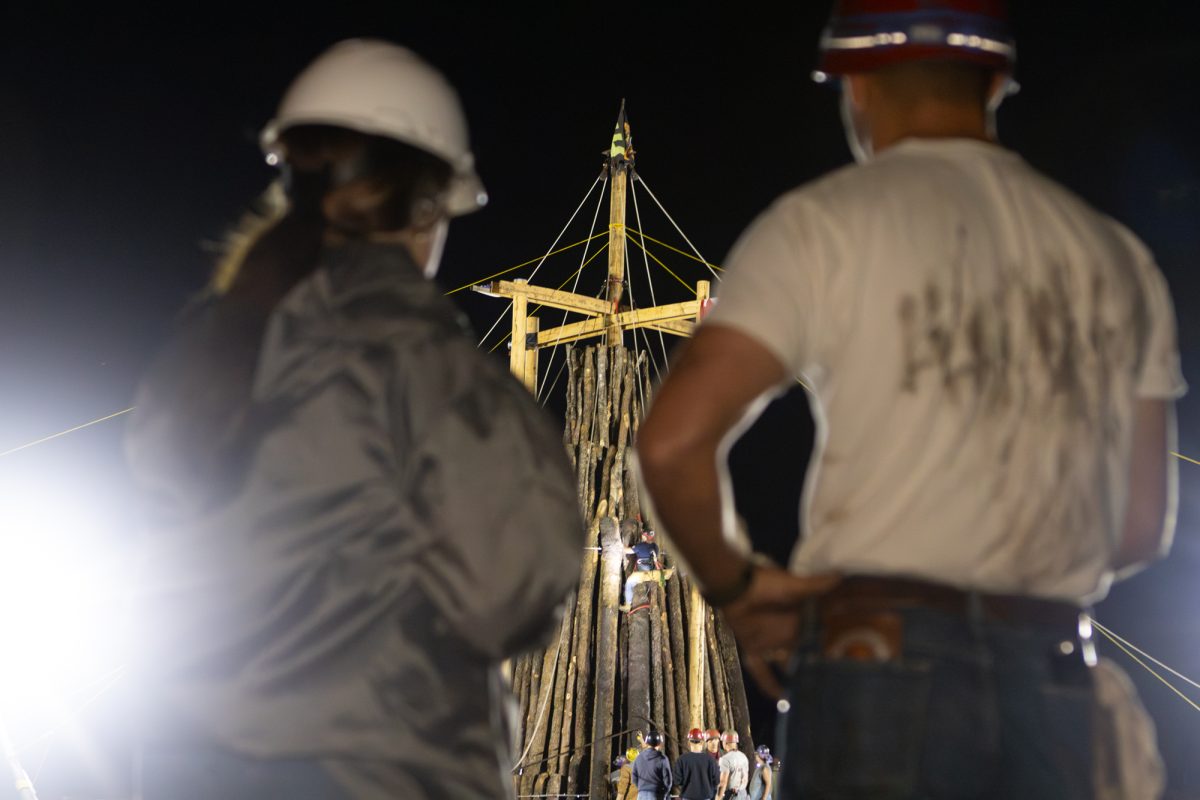Nautical archaeology is a relatively new discipline — with full excavations from the seabed occuring first in 1960 — and A&M is on the forefront of this new field as the school boasts the only Nautical Archaeology Program in the world.
“I always have to explain when I’m talking about it that it’s ‘Heroine’ with an ‘e.’ Talking about how much I love ‘heroin’ can concern people,” said Kevin Crisman, one of six professors of Nautical Archaeology at Texas A&M.
The steamboat Heroine is one of the subjects of study in the “New World Lab” which investigates shipwrecks over the last 500 years. The founder of the A&M Nautical Archaeology Program and creator of the Institute of Nautical Archaeology, or INA, is George Bass, professor emeritus at A&M.
“The combination of Texas A&M classroom work and INA field experience makes our program special,” Bass said. “Some of our applicants seem mostly interested in diving, but there is so much more to it than that.”
Lilia Campana, a graduate of the Nautical Archaeology Program, is now a professor at A&M utilizing her expertise in mathematics applied to ship design through the study of archival “sources” on “source material”. Campana’s dissertation topic was about Vettor Fausto, the first naval architect in the arsenal of Venice.
“[Vettor Fausto] is a genius,” Campana said. “He was considered one of the most important innovators in the Renaissance because he introduced a shipbuilding ratio based on a mathematical rule.”
Fausto used the Gauss Formula 300 years before the formula’s namesake, Johann Carl Friedrich Gauss, was born. The formula makes up one of the four equations of classical electrodynamics.
“This is a dream come true,” Campana said. “It is a lot of work but is very rewarding. I was lucky.”
Another department venture led to the discovery of The Phoenix II, the steamboat that carried cholera to the United States for the first time. The Phoenix II is the subject of graduate student Carolyn Kennedy’s dissertation, and she stumbled onto the identity of the wreck by chance.
“We were there for three years,” Kennedy said. “And in our final season we found [a chisel] … It was an exciting moment for everyone and very unexpected. I’d just given a presentation at a conference right before to say we would probably never know for sure which ship it was, so this was pretty cool.”
What makes the chisel special is the inscription on it, SB Phoenix, or “Steamboat Phoenix,” the name of the ship in question.
It is through the dedication, research and fieldwork of the Nautical Archaeology Program that there is so much known about previous maritime trade and seafaring, Crisman said.
“[Ships] have so much to tell us about the past,” Crisman said. “It is both comforting and disturbing that we make the same mistakes. We benefit from the mistakes of the past … Ships are a microcosm of the society that creates them. For the people on board they were a functioning mini society that represents the best technology of the time.”
Those interested in the Nautical Archaeology Program should keep a lookout for a two-day lecture series April 5 – 6 about four influential excavations. This is followed by Shipwreck Weekend, a chance for anyone who wants hands-on experience with underwater archaeology to come participate in nautical themed activities April 8.
A&M features only Nautical Archeology program in world
February 28, 2017
0
Donate to The Battalion
$0
$5000
Contributed
Our Goal
Your donation will support the student journalists of Texas A&M University - College Station. Your contribution will allow us to purchase equipment and cover our annual website hosting costs, in addition to paying freelance staffers for their work, travel costs for coverage and more!








